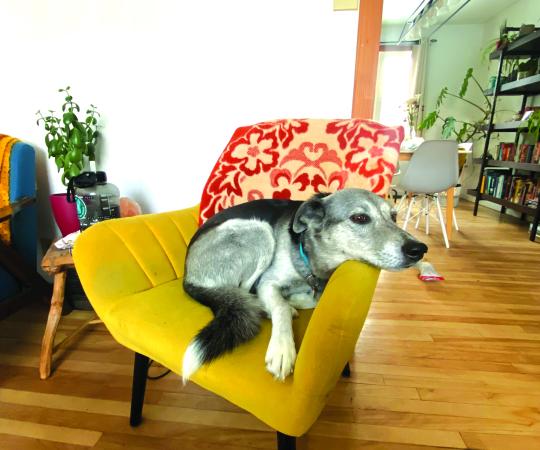Darlene Coward Wight pauses when asked the value of the Government of Nunavut’s art collection, now stashed in the basement of the Winnipeg Art Gallery. “The monetary value?” She shrugs her shoulders. “I don’t know.”
As the curator of Inuit art, Wight has spent 30 years focused on the artistic value of the sculptures, prints, and drawings at the gallery. A photo of her bushy-haired younger self in the Inuit art vault leans against the wall in her office. “Someone found that in the archives,” she says sheepishly. Her career began at Canadian Arctic Producers, when she first visited the North in 1982, and where she marketed Inuit art to international galleries. She knows Nunavut’s loan makes the work more easily accessible to southerners, and brings the potential for sales for artists as the WAG sends exhibits of the work abroad. “Every show helps with promoting the artists’ work,” she says. “Before, it was in storage in Yellowknife, so no one was seeing it.”
In February, three semi-trucks, carrying 1,800 prized pieces of Inuit art, arrived from the Prince of Wales Northern Heritage Centre in Yellowknife, where Nunavut’s art collection had been sitting since the territory formed. Nunavut has loaned its collection to Winnipeg on a five-year agreement that could be extended for as long as it takes Nunavut to build its own gallery. From the total 7,500 works in the collection, Wight’s putting together a show of Baker Lake art for the Canadian embassy in Washington, D.C. for spring 2017. There are preliminary plans for a 2018 show to tour French galleries.
Currently, Wight’s sorting through the works—drawings, clothing, photos, prints, carvings, artefacts like blubber pounders—for an exhibit to take over the WAG’s prime galleries this October. It’s an updated show, Our Land, that ran in 2004 at the Peabody Essex Museum in Massachusetts. “The Our Land show has an amazing caribou-skin parka,” gushes Wight. With a design of two hands on the chest, the parka was created by a 19th century Inuit shaman named Ava, and then notoriously ripped off by UK fashion label KTZ. “It’s a replica of the actual parka.”
In the basement of the Winnipeg Art Gallery, Wight walks through a large receiving bay and gestures at a pile of flattened coroplast boxes: “It was like an assembly line down here.” As the boxes and wooden crates of Nunavut’s collection were opened, each piece was photographed and entered into a database. Wight swipes her security card to enter the museum’s four vaults, where the Nunavut collection is kept.
Inside the Inuit art vault, designed to hold the museum’s sculptures, the temperature is kept at 22 C, the humidity at 50 percent. It looks like the rec room of an obsessive collector who can’t help himself, who keeps buying more. Lined with shelves from floor to ceiling, the room holds thousands of sculptures, with thousands of faces and eyes that give you the feeling of being observed. The museum houses the world’s largest collection of Inuit art, with 13,000 sculptures, prints and drawings. The collection started in the 1950s, when the gallery’s then-director first saw Inuit sculptures for sale in the Bay department store across the street. Inuit art became an official priority and the gallery gained a decade-long head start on collecting.
In the vault, a separate rack of shelves was built for Government of Nunavut sculptures. Boxes hold the tiniest carvings, snuggly padded in ethafoam shaped to fit the delicate pieces. One is an ivory knife, about the length of a hand, inscribed “RCMP.” Likely from the 1930s, the carving is completely different from anything in Winnipeg’s collection, until now. Nunavut’s loan fills gaps in the WAG’s holdings: wall hangings, ceramics, carvings from before 1949, and material culture like soapstone lamps. Nunavut pays $100,000 each year to store the art; Manitoba puts up an equal amount. Will Wight be disappointed if Nunavut retrieves its collection after just a few years? “We’ll be fine,” she says. “We’ll keep it as long as they want us to keep it.”
In the vault, an identification number is inked on the bottom of WAG’s sculptures. Government of Nunavut sculptures have a ribbon and tag with an identification number. “The ink can be removed, it’s not permanent,” explains Wight. “But we’re not writing numbers on the pieces that aren’t ours.”










